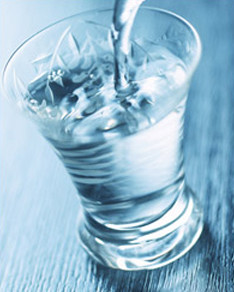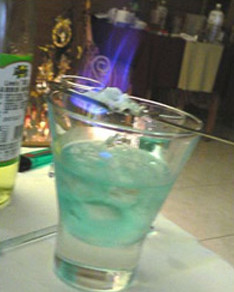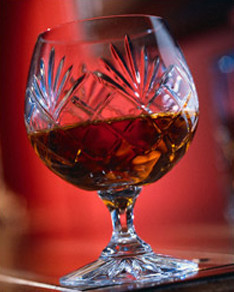 Alcoholic drinks of the world We will tell you about the mostpopular strong alcoholic drinks that are in demand all over the world. But do not forget, in order to feel all the charm of the drink, it is enough to observe two simple laws: to consume alcohol in moderation and bypass low-quality products, from which in every sense there is only one disorder ... For example, vodka. What Russian would deny himself the pleasure of skipping a glass or two at lunch, dinner, or at the time of a plentiful feast. In Russia, this drink was first mentioned in the annals of 1386, when grape alcohol came to the country from Genoa. The mass production of vodka, consisting of water and filtered ethyl alcohol, was started only a hundred years later, and at the beginning of the 16th they began to be exported to Sweden. Its production was put on stream by the nobles who keep large factories, the number of which by 1860, by the way, exceeded 5 thousand. Distillation in distilleries was introduced much later than in Europe, and therefore at first they used the achievements of mead brewers in the purification of the product. The quality of vodka was monitored by the "Technical Committee", which included D. Mendeleev. Today in Russia it is produced in more than a hundred names. There are two types of vodka - ordinary and special (flavored). The first is a water-alcohol mixture with a strength of 40, 50, 56% vol. The second is obtained by insisting on the alcohol of herbs and berries and then subjecting the liquid to distillation. The peak of fashion for such vodka came in the 16-17th century, when aniseed, birch, cherry, pear, mint, lemon, viburnum and others were made in noble estates. The drink had a brighter taste and unusual color in comparison with traditional vodka. Even today you cannot deny him originality. The sales leaders are vodka flavored with orange, lemon and grapes. Following the Europeans, Russian producers of "fire liquid" not so long ago switched to a new format: the strength of vodka is now compared with, as evidenced by the following inscription on the label - 40% vol (70 Br. Proof).
Alcoholic drinks of the world We will tell you about the mostpopular strong alcoholic drinks that are in demand all over the world. But do not forget, in order to feel all the charm of the drink, it is enough to observe two simple laws: to consume alcohol in moderation and bypass low-quality products, from which in every sense there is only one disorder ... For example, vodka. What Russian would deny himself the pleasure of skipping a glass or two at lunch, dinner, or at the time of a plentiful feast. In Russia, this drink was first mentioned in the annals of 1386, when grape alcohol came to the country from Genoa. The mass production of vodka, consisting of water and filtered ethyl alcohol, was started only a hundred years later, and at the beginning of the 16th they began to be exported to Sweden. Its production was put on stream by the nobles who keep large factories, the number of which by 1860, by the way, exceeded 5 thousand. Distillation in distilleries was introduced much later than in Europe, and therefore at first they used the achievements of mead brewers in the purification of the product. The quality of vodka was monitored by the "Technical Committee", which included D. Mendeleev. Today in Russia it is produced in more than a hundred names. There are two types of vodka - ordinary and special (flavored). The first is a water-alcohol mixture with a strength of 40, 50, 56% vol. The second is obtained by insisting on the alcohol of herbs and berries and then subjecting the liquid to distillation. The peak of fashion for such vodka came in the 16-17th century, when aniseed, birch, cherry, pear, mint, lemon, viburnum and others were made in noble estates. The drink had a brighter taste and unusual color in comparison with traditional vodka. Even today you cannot deny him originality. The sales leaders are vodka flavored with orange, lemon and grapes. Following the Europeans, Russian producers of "fire liquid" not so long ago switched to a new format: the strength of vodka is now compared with, as evidenced by the following inscription on the label - 40% vol (70 Br. Proof). By the way, this is not the only time,combining these drinks. The raw material for whiskey, the home of which is Scotland, where the art of drinking alcohol was introduced to the local population by missionaries, along with other components was rye. Also used barley and even oats, but it is rye that makes whiskey with Russian vodka. In addition, at the outlet, it was distilled - again, according to the "vodka" recipe. The first time whiskey among English invaders continually changed its name, having thus passed the chain uisge-uisce-fuisce-uiskie-whisky, it was made only in the Scottish monasteries. In this case, the therapeutic properties of the drink were predominant. It was taken internally for a cold, rubbed the bruised areas and made warming compresses. For preventive purposes it was also used for infectious diseases and as a disinfectant during surgical operations. Later - in the XVI-XVII centuries - whiskey began to produce everywhere. Farmers connected to winemaking. Struggling for quality, the government of England has allowed to produce whiskey only to eight large enterprises. Now in the world there are several varieties of whiskey. There are truly Scottish - single malt "single malt", made from barley malt, and "pure malt" - blended. Irish, Canadian, American and, most surprisingly, Japanese whiskeys also stand out. For strange at first glance the name Baijiu, which literally means "white liquor" or "white spirit", hides Chinese distilled spirits. It is an independent drink that does not have similarities with Japanese whiskey. The norm of alcohol in it is 40-60% by volume. In this part, he is undoubtedly a relative of vodka. The traditions of their use are similar. Both drinks enter the human body as a supplement to food, and not as a separate "dish". The main component of Baijiu is sorghum - grain and fodder crops from the family of cereals. In northern China this rule is strictly observed, whereas in the south in Baijiu glutinous rice is widely used.
By the way, this is not the only time,combining these drinks. The raw material for whiskey, the home of which is Scotland, where the art of drinking alcohol was introduced to the local population by missionaries, along with other components was rye. Also used barley and even oats, but it is rye that makes whiskey with Russian vodka. In addition, at the outlet, it was distilled - again, according to the "vodka" recipe. The first time whiskey among English invaders continually changed its name, having thus passed the chain uisge-uisce-fuisce-uiskie-whisky, it was made only in the Scottish monasteries. In this case, the therapeutic properties of the drink were predominant. It was taken internally for a cold, rubbed the bruised areas and made warming compresses. For preventive purposes it was also used for infectious diseases and as a disinfectant during surgical operations. Later - in the XVI-XVII centuries - whiskey began to produce everywhere. Farmers connected to winemaking. Struggling for quality, the government of England has allowed to produce whiskey only to eight large enterprises. Now in the world there are several varieties of whiskey. There are truly Scottish - single malt "single malt", made from barley malt, and "pure malt" - blended. Irish, Canadian, American and, most surprisingly, Japanese whiskeys also stand out. For strange at first glance the name Baijiu, which literally means "white liquor" or "white spirit", hides Chinese distilled spirits. It is an independent drink that does not have similarities with Japanese whiskey. The norm of alcohol in it is 40-60% by volume. In this part, he is undoubtedly a relative of vodka. The traditions of their use are similar. Both drinks enter the human body as a supplement to food, and not as a separate "dish". The main component of Baijiu is sorghum - grain and fodder crops from the family of cereals. In northern China this rule is strictly observed, whereas in the south in Baijiu glutinous rice is widely used. It is noticed that recently this drink has becomeenter the cocktail ingredients. The flavor of the product is the classification feature for Baijiu. Distinguished by thick, light, rice (in the case when Baijiu is made from rice), honey and other flavors. If you believe the legends, the first drink from sorghum in China was received back in 550 AD. e. during the reign of the Northern and Southern Dynasties. Variety Baijiu - Máotái jiǔ - has a 200-year history, in which gold letters are inscribed in 1915, when the drink received the main prize of the exhibition in San Francisco. A hundred years older, its other kind is dà qū jiǔ, made in Sichuan province. Also as vodka is a symbol of Russia, and Baijiu is of China, grappa is a visiting card of Italy. Here, this "fiery water" with a very specific aroma is known since the XV century. The recipe has not undergone any changes since then: and then, and now, grapes come from peel from grapes, its flesh and small bones. First they are placed under steam, then they are distilled. The decree, issued in 1997, gives this alcohol the following definition: a distillate made in Italy from local raw materials. The most highly valued grappa obtained in Friuli and Veneto. In these areas, production of both single-port and multi-grade grapp is established. "Old" and "very old" grappas "live" in oak barrels from 12 to 18 months, eventually acquiring a beautiful amber tint. White grappa, considered young, enters the bottles as soon as the distillation process passes. Exposure is not exposed, but despite this has a pleasant wine flavor and high strength. In that, which for a long time was in barrels, alcohol 45-50%. In insidious absinthe, the popularity of which in France in the XIX century was akin to guilt, the fortress is much larger - 70%. The composition of the drink in addition to wormwood, includes fennel, mint, calamus, lemon balm and other herbs. The traditional color of absinthe is green, but in some cases it can be yellow, red and brown. Peak consumption of this type of alcohol fell during the French colonial wars, held in North Africa since 1830. Absinthe saved the military from dysentery and other equally unpleasant diseases. It was consumed in both Madagascar and Indochina, not to mention France and its neighboring states. Absinthe, considered to be the best of the best, was made from grape alcohol from time immemorial, while industrial grade alcohol was used for "hard laborers". This drink is very different from whiskey or brandy. It combines, passing different degrees of purification, herbs. In the case of brandy and others like them - at the final stage is just strong alcohol. There is no "inflorescence" in it. The historical facts of the reign of Napoleon III eloquently testify: the excessive consumption of absinthe caused paralysis and subsequently led to death. At the best, a person got rid of epilepsy.
It is noticed that recently this drink has becomeenter the cocktail ingredients. The flavor of the product is the classification feature for Baijiu. Distinguished by thick, light, rice (in the case when Baijiu is made from rice), honey and other flavors. If you believe the legends, the first drink from sorghum in China was received back in 550 AD. e. during the reign of the Northern and Southern Dynasties. Variety Baijiu - Máotái jiǔ - has a 200-year history, in which gold letters are inscribed in 1915, when the drink received the main prize of the exhibition in San Francisco. A hundred years older, its other kind is dà qū jiǔ, made in Sichuan province. Also as vodka is a symbol of Russia, and Baijiu is of China, grappa is a visiting card of Italy. Here, this "fiery water" with a very specific aroma is known since the XV century. The recipe has not undergone any changes since then: and then, and now, grapes come from peel from grapes, its flesh and small bones. First they are placed under steam, then they are distilled. The decree, issued in 1997, gives this alcohol the following definition: a distillate made in Italy from local raw materials. The most highly valued grappa obtained in Friuli and Veneto. In these areas, production of both single-port and multi-grade grapp is established. "Old" and "very old" grappas "live" in oak barrels from 12 to 18 months, eventually acquiring a beautiful amber tint. White grappa, considered young, enters the bottles as soon as the distillation process passes. Exposure is not exposed, but despite this has a pleasant wine flavor and high strength. In that, which for a long time was in barrels, alcohol 45-50%. In insidious absinthe, the popularity of which in France in the XIX century was akin to guilt, the fortress is much larger - 70%. The composition of the drink in addition to wormwood, includes fennel, mint, calamus, lemon balm and other herbs. The traditional color of absinthe is green, but in some cases it can be yellow, red and brown. Peak consumption of this type of alcohol fell during the French colonial wars, held in North Africa since 1830. Absinthe saved the military from dysentery and other equally unpleasant diseases. It was consumed in both Madagascar and Indochina, not to mention France and its neighboring states. Absinthe, considered to be the best of the best, was made from grape alcohol from time immemorial, while industrial grade alcohol was used for "hard laborers". This drink is very different from whiskey or brandy. It combines, passing different degrees of purification, herbs. In the case of brandy and others like them - at the final stage is just strong alcohol. There is no "inflorescence" in it. The historical facts of the reign of Napoleon III eloquently testify: the excessive consumption of absinthe caused paralysis and subsequently led to death. At the best, a person got rid of epilepsy.  It's a few centuries ago ... Now to absintheare not with the same passion as before, although the admirers of this drink are in all countries of the world. By the way, about brandy. His production, as well as a "relative" - whiskey, is based on distilling distillery. Strong alcohol obtained during the distillation of wine, was made even in ancient Greece and Rome, the modern recipe he acquired in the XIV century. Today brandy is a drink created by distilling fermented fruit and berry products or grape wine. In its composition it resembles cognac. The best Italian suppliers of brandy are the firms "Bouton" and "Stock 84". Spanish winemakers deserve attention to the brands Ribero and Ferreira, they are stored in barrels, adapted for porto. Brandy in Russia is often called cognac and is divided into branded, collection and ordinary fortress from 40 to 42%. If brandy and brandy do not use any strict standards of formulation and manufacture, tequila born in the Mexican province is a law-abiding person. The rules, signed by the Tequila Regulatory Board, say that it should be made from blue agave only in five states of Mexico. The presence of agave in a strong drink by standards is 51%, the remaining share belongs to sugarcane or corn. The first mention of tequila dates back to the 16th century. Having exhausted all the reserves of brandy, the Spanish conquistadors switched to mescal (this was the name of tequila then). Alcohol was obtained by the agave distillation method. In 1600, the Marquis Pedro Sanchez de Tagle began to replicate tequila in industrial quantities. But this is not exactly the drink that we consume now. Experts of alcohol claim: "today's version" was born two centuries ago in Guadalajara. According to the established tradition of tequila - a self-sufficient drink, but to dilute it with whiskey or add to other alcohol is also not considered shameful. Among all the variety of types of "Mexican drug" winemakers persistently recommend "old" tequila, which from year to 3 years, a year-old - "rested" and "silver," it is only 60 days old.
It's a few centuries ago ... Now to absintheare not with the same passion as before, although the admirers of this drink are in all countries of the world. By the way, about brandy. His production, as well as a "relative" - whiskey, is based on distilling distillery. Strong alcohol obtained during the distillation of wine, was made even in ancient Greece and Rome, the modern recipe he acquired in the XIV century. Today brandy is a drink created by distilling fermented fruit and berry products or grape wine. In its composition it resembles cognac. The best Italian suppliers of brandy are the firms "Bouton" and "Stock 84". Spanish winemakers deserve attention to the brands Ribero and Ferreira, they are stored in barrels, adapted for porto. Brandy in Russia is often called cognac and is divided into branded, collection and ordinary fortress from 40 to 42%. If brandy and brandy do not use any strict standards of formulation and manufacture, tequila born in the Mexican province is a law-abiding person. The rules, signed by the Tequila Regulatory Board, say that it should be made from blue agave only in five states of Mexico. The presence of agave in a strong drink by standards is 51%, the remaining share belongs to sugarcane or corn. The first mention of tequila dates back to the 16th century. Having exhausted all the reserves of brandy, the Spanish conquistadors switched to mescal (this was the name of tequila then). Alcohol was obtained by the agave distillation method. In 1600, the Marquis Pedro Sanchez de Tagle began to replicate tequila in industrial quantities. But this is not exactly the drink that we consume now. Experts of alcohol claim: "today's version" was born two centuries ago in Guadalajara. According to the established tradition of tequila - a self-sufficient drink, but to dilute it with whiskey or add to other alcohol is also not considered shameful. Among all the variety of types of "Mexican drug" winemakers persistently recommend "old" tequila, which from year to 3 years, a year-old - "rested" and "silver," it is only 60 days old. Juniper vodka or gin is also distilled,using wheat alcohol, juniper and citrus - hence the original flavor of the drink, and increased dryness - because of which it is not used in its pure form. Its role in this process is played by a double distillation of the drink. The Netherlands, the 17th century - it was there that the gin appeared. Subsequently, he "gets a residence permit" in England. The trip was not in vain - the recipe was modified. The drink, made in Britain, was distilled with barley and stored in wooden barrels, due to what it acquired the features of whiskey. The same Holland was brought to mind in the stills cubes. In 1832, its vertical distillation began, and fifty years later appeared dry London gin, so popular in the last century, and in the present. As already mentioned, gin is an integral part of other famous drinks. It is usually added to vermouth, soda, tonic, cranberry juice and others. The leading brands of juniper vodka can be found in the national gin museum that is in Belgium. Unfortunately, the Roma Museum does not exist, and then there would be told that it is produced in huge quantities in the Caribbean with the fermentation and distillation of cane juice with molasses , and that light rum is good in cocktails, and dark or gold is in cooking, and only rum of premium class is "clean", throwing figured ice on the bottom of the glass. His distant relative is Bram (sugar wine), which was given to the traveler Marco Polo. However, this drink was used in ancient China and India. Actually, rum was fermented in the XVII century on the reed caribbean plantations. Surprising properties of molasses with time turned into alcohol were first noted by slaves. The strength of the drink still varies depending on the country of origin. In Chile, the norm is 40% rum, in Colombia - 50%. There is also an excerpt: in Cuba - three years, in the Dominican Republic - half as much, and in Mexico - only 8 months. By the name of the rum, and what kind of variety it is, determine the homeland of the drink. All strong alcoholic drinks are so different, but this does not prevent them from entering into one group. Each of them has their own fans, who support the centuries-old drinking tradition, which means that tequila, brandy, whiskey, vodka and other "neighbors" have a long life.
Juniper vodka or gin is also distilled,using wheat alcohol, juniper and citrus - hence the original flavor of the drink, and increased dryness - because of which it is not used in its pure form. Its role in this process is played by a double distillation of the drink. The Netherlands, the 17th century - it was there that the gin appeared. Subsequently, he "gets a residence permit" in England. The trip was not in vain - the recipe was modified. The drink, made in Britain, was distilled with barley and stored in wooden barrels, due to what it acquired the features of whiskey. The same Holland was brought to mind in the stills cubes. In 1832, its vertical distillation began, and fifty years later appeared dry London gin, so popular in the last century, and in the present. As already mentioned, gin is an integral part of other famous drinks. It is usually added to vermouth, soda, tonic, cranberry juice and others. The leading brands of juniper vodka can be found in the national gin museum that is in Belgium. Unfortunately, the Roma Museum does not exist, and then there would be told that it is produced in huge quantities in the Caribbean with the fermentation and distillation of cane juice with molasses , and that light rum is good in cocktails, and dark or gold is in cooking, and only rum of premium class is "clean", throwing figured ice on the bottom of the glass. His distant relative is Bram (sugar wine), which was given to the traveler Marco Polo. However, this drink was used in ancient China and India. Actually, rum was fermented in the XVII century on the reed caribbean plantations. Surprising properties of molasses with time turned into alcohol were first noted by slaves. The strength of the drink still varies depending on the country of origin. In Chile, the norm is 40% rum, in Colombia - 50%. There is also an excerpt: in Cuba - three years, in the Dominican Republic - half as much, and in Mexico - only 8 months. By the name of the rum, and what kind of variety it is, determine the homeland of the drink. All strong alcoholic drinks are so different, but this does not prevent them from entering into one group. Each of them has their own fans, who support the centuries-old drinking tradition, which means that tequila, brandy, whiskey, vodka and other "neighbors" have a long life.

Making Money with Desserts: Success Stories
Yevhen Polishchuk (Fedutinov) instagram: @ evgeniyafedutinovavk.com / janeshomebaking– It all started with baking for relatives and friends. Gradually, she began uploading photos of her baking to Instagram, and orders began to come in. I made my first cake to order on October 13, 2014, and a little earlier I started making macarons and cupcakes. We can say that the business "found me myself", I am very [...]

Soups are cold recipes with photos
Cold cucumber soup with yogurt and lemonSorbet from La Taverna restaurant chef Alexander Zhurkina Photo: Getty Images Ingredients: Yoghurt without additives - 125 gCucumber - 150 gSorbet lemon / lime - 50 gCool shrimp - 24 gFresh ginger - 1 gLime lime - 5 gFresh orange juice - 5 gPetroshka - 1 g pink - 1 gCress salad - […]

barbeque kebab
Pork tenderloin glaze Photos: Dmitry Bayrak / dbstudio Cooking time: 20 minutes + time for pickling. Calorie content: 454 kcal per 1 serving. For 4 servings: 4 pork tenderloin (about 300 g each), 1 onion, 2 cloves of garlic, 1 tsp. lemon peel, 1 tsp. lemon juice, a pinch of ground cumin, coriander and turmeric, 1 tbsp. l vegetable [...]

Pierre Duacan: dietary recipes: Ducane diet
Beetroot Photo: Season'S, Luxury Hotels Representation You will need: · Boiled beets - 60 g · Fresh cucumbers - 20 g · Red radish - 20 g · Green onions - 10 g · Egg - 1 pcs · Mineral drinking water - 200 g · Salt - 1 g Ready: · Boil egg and beetroot. · Grind cucumbers, radishes and a part of beets. Putting everything [...]





